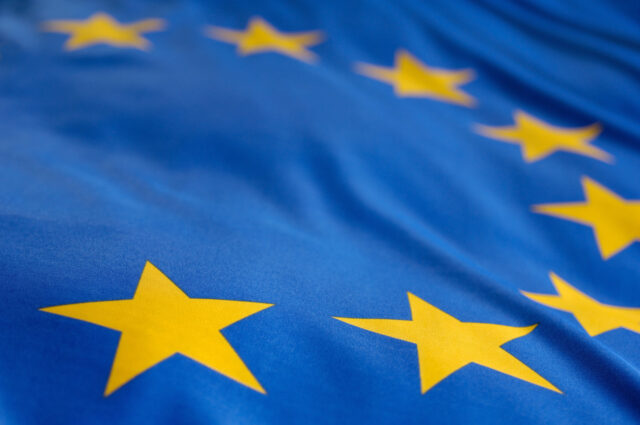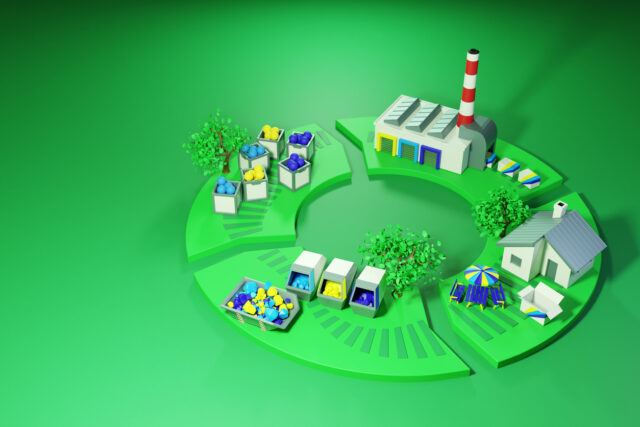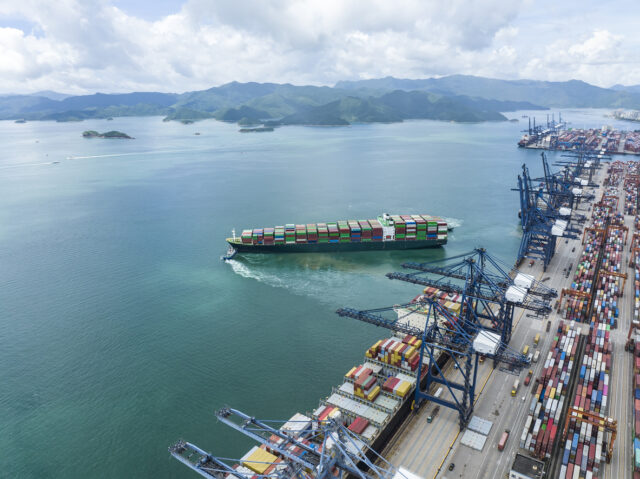Getting an item as common as a pencil into the hands of a consumer can require a process involving hundreds or even thousands of people, from material procurement to manufacturing to distribution. If something goes wrong, be it misplaced stock or erroneous paperwork, it can be onerous and potentially too costly to determine where the fault occurred.
Now, companies around the world are finding ways to improve transparency at all stages of their supply chain. Through a combination of blockchain and real-time location intelligence, businesses can make the movement of goods more accountable, with the location and state of all items constantly verified with all stakeholders, consequently improving consumer confidence and brand reputation.
Why blockchain?
In short, blockchain is a distributed ledger. It can be best thought of as a continuously growing list of records, which are the blocks. Each one of these records, or blocks, are duplicated and redistributed to multiple different locations – all of them linked together with cryptographic technology. The links are subsequently the chains.
With so many points in space, and all points connected to each other via heavily encrypted chains, each addition is made from a validated source that is a trusted part of the network. Then, via a secured process, the update is spread to all the other blocks. This makes the information within the blockchain system inherently secure. It’s extremely difficult to make an invalid entry and, if you were able to make one, this would then be detected by all of the other blocks.
Adding location intelligence to these capabilities creates yet another dimension of blockchain, and one that provides numerous benefits for the supply chain. By layering reliable location data with the intrinsic security of the blockchain distributed ledger function, it provides 100% certainty that an asset is being used at the right place, at the right time, by the right person.
In the context of a large-scale shipping operation, for instance, there may be thousands of containers filled with millions of packages or assets. Using a system that can track every asset with full certainty, any concerns can be eliminated about whether the items are where they are supposed to be, or if anything is missing.
Building trust and eliminating fraud
As blockchain expands, so too will the data it records, which in turn increases trust. By ensuring via this secured digital ledger that an asset has moved from a warehouse to a lorry on a Thursday afternoon, more data can then be added. For example, it can show that the asset moved from a specific shelf in a warehouse on a specific street and was moved by a specific truck operated by a specific driver. Securing the location data with full trust provides assurance that things are happening correctly and means that financial transactions can be made with more confidence.
Layering mapping capabilities and rich location data to a blockchain record also enables fraud detection. Without blockchain, it cannot be certain that the delivery updates provided are in fact accurate.
Blockchain makes transactions transparent and decentralised, enabling the possibility to automatically verify their accuracy by matching the real location of an item with the location report from a logistics company. As every computer in the network has its own copy of the blockchain, this helps to eliminate a single point of failure or fraud.
A new approach for workers
Globalisation of the supply chain isn’t the only thing causing problems. Outdated technology and archaic processes put more pressure on workers, which means the supply chain isn’t as efficient as it should be. In its 2019 report, the Business Continuity Institute found that 73% of companies surveyed were using Microsoft Excel to plan and monitor their supply chains, as well as to predict and mitigate disruptions. Blockchain can assist by automating inventory management, relieving the amount of reliance on paperwork.
Additionally, with blockchain’s margin of error at a minimum, supply chain employees have fewer opportunities to make mistakes. When issues do arise, these errors can be discovered quickly by the technology, eliminating the need for a central intermediary to govern the network thus eradicating any dependence on detection by humans.
With blockchain streamlining processes across borders and making operations more mobile, this could provide opportunities for a percentage of the workforce to also function remotely. This would also significantly increase the number of contactless transactions, a vital aspect for remote workers to remain safe.
Not only that, but further utilisation of blockchain creates roles to ensure the technology operates accordingly. In fact, blockchain topped the list as the most in-demand hard skill for 2020 according to LinkedIn, considered as a priority for employers hiring in the US, UK, France, Germany and Australia. This was the first instance of blockchain having appeared on this list, indicating how rapidly the technology is infiltrating numerous sectors and proving its business value.
The future of blockchain
At the moment, blockchain is used primarily in the large-scale movement of goods, and in financial transactions like cryptocurrencies. But in the future, demand for the security that blockchain provides may rise exponentially, putting the responsibility on infrastructures to develop secure and compliant solutions which can be used by anyone.
Until that comes, however, consumers can feel confident that their deliveries will arrive on time, thanks to technologies like location intelligence and blockchain.











